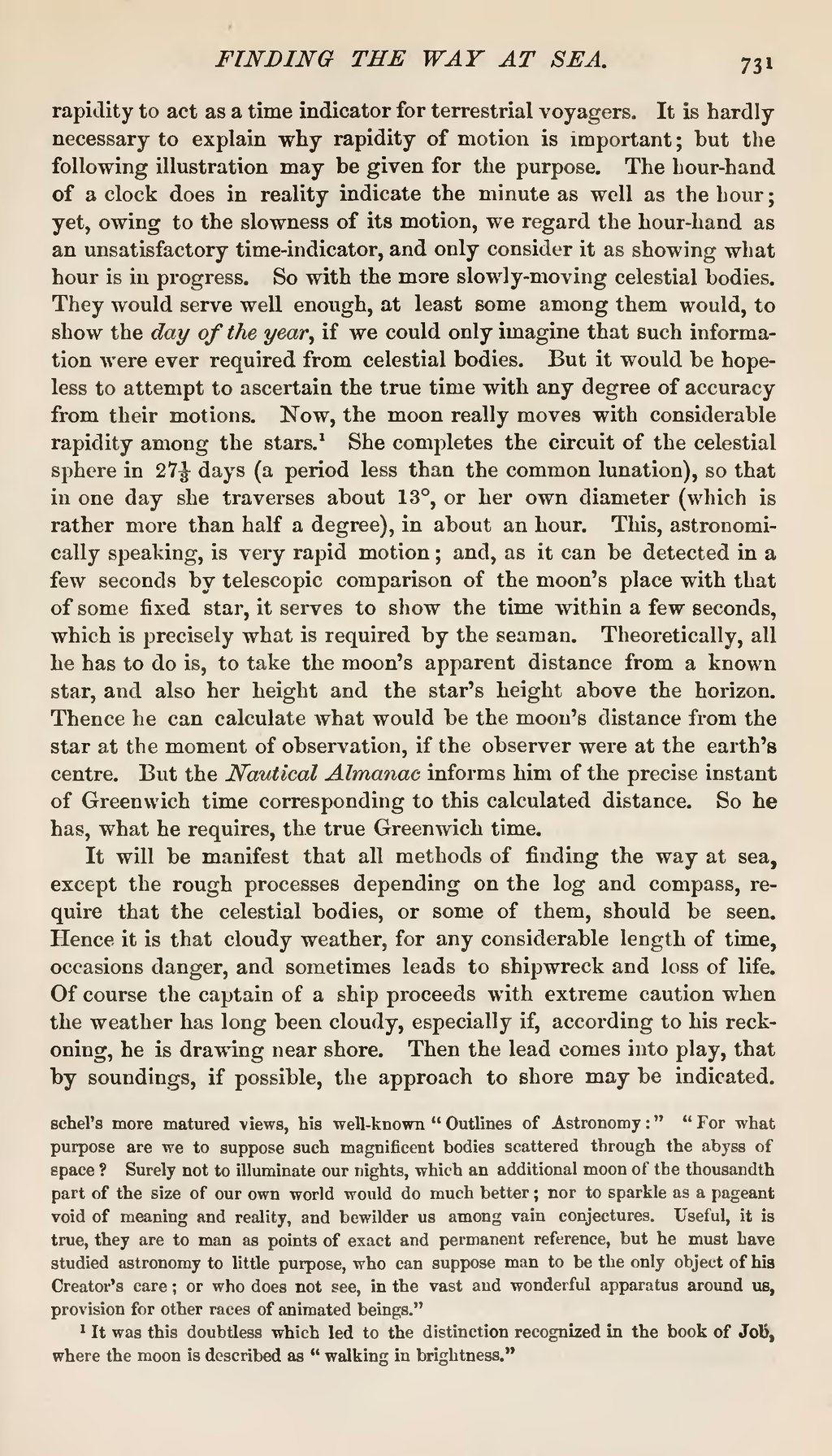rapidity to act as a time indicator for terrestrial voyagers. It is hardly necessary to explain why rapidity of motion is important; but the following illustration may be given for the purpose. The hour-hand of a clock does in reality indicate the minute as well as the hour; yet, owing to the slowness of its motion, we regard the hour-hand as an unsatisfactory time-indicator, and only consider it as showing what hour is in progress. So with the more slowly-moving celestial bodies. They would serve well enough, at least some among them would, to show the day of the year, if we could only imagine that such information were ever required from celestial bodies. But it would be hopeless to attempt to ascertain the true time with any degree of accuracy from their motions. Now, the moon really moves with considerable rapidity among the stars.[1] She completes the circuit of the celestial sphere in 27⅓ days (a period less than the common lunation), so that in one day she traverses about 13°, or her own diameter (which is rather more than half a degree), in about an hour. This, astronomically speaking, is very rapid motion; and, as it can be detected in a few seconds by telescopic comparison of the moon's place with that of some fixed star, it serves to show the time within a few seconds, which is precisely what is required by the seaman. Theoretically, all he has to do is, to take the moon's apparent distance from a known star, and also her height and the star's height above the horizon. Thence he can calculate what would be the moon's distance from the star at the moment of observation, if the observer were at the earth's centre. But the Nautical Almanac informs him of the precise instant of Greenwich time corresponding to this calculated distance. So he has, what he requires, the true Greenwich time.
It will be manifest that all methods of finding the way at sea, except the rough processes depending on the log and compass, require that the celestial bodies, or some of them, should be seen. Hence it is that cloudy weather, for any considerable length of time, occasions danger, and sometimes leads to shipwreck and loss of life. Of course the captain of a ship proceeds with extreme caution when the weather has long been cloudy, especially if, according to his reckoning, he is drawing near shore. Then the lead comes into play, that by soundings, if possible, the approach to shore may be indicated.
- ↑ It was this doubtless which led to the distinction recognized in the book of Job, where the moon is described as "walking in brightness."
schel's more matured views, his well-known "Outlines of Astronomy:" "For what purpose are we to suppose such magnificent bodies scattered through the abyss of space? Surely not to illuminate our nights, which an additional moon of the thousandth part of the size of our own world would do much better; nor to sparkle as a pageant void of meaning and reality, and bewilder us among vain conjectures. Useful, it is true, they are to man as points of exact and permanent reference, but he must have studied astronomy to little purpose, who can suppose man to be the only object of his Creator's care; or who does not see, in the vast and wonderful apparatus around us, provision for other races of animated beings."

